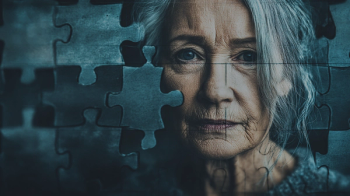
- Psychiatric Times Vol 14 No 11
- Volume 14
- Issue 11
Commentary: A Victory for Patients
In the spring of 1997, legalization of physician-assisted suicide seemed inevitable. In the space of a month, two appellate courts had declared a constitutional right to physician-assisted suicide, overturning long-standing state laws in New York and Washington that prohibited the practice. Many observers expected the U.S. Supreme Court to follow suit. Earlier, Oregon had become the first state to legalize physician-assisted suicide. Although that decision was still being contested in the courts, had the Supreme Court recognized and accepted a constitutional right to physician-assisted suicide, Oregon was ready to become the first state in which it was practiced.
In the spring of 1997, legalization of physician-assisted suicide seemed inevitable. In the space of a month, two appellate courts had declared a constitutional right to physician-assisted suicide, overturning long-standing state laws in New York and Washington that prohibited the practice. Many observers expected the U.S. Supreme Court to follow suit. Earlier, Oregon had become the first state to legalize physician-assisted suicide. Although that decision was still being contested in the courts, had the Supreme Court recognized and accepted a constitutional right to physician-assisted suicide, Oregon was ready to become the first state in which it was practiced.
When Lawrence Tribe, a distinguished Harvard law professor skilled in presenting cases to the Supreme Court, agreed to argue the New York case for the plaintiffs, euthanasia advocates were elated and opponents were dismayed.
Oral arguments held before the court in January 1997 showed, however, that the outcome was not inevitable. The justices indicated that they were considering the realities of medicine in ways that the appellate courts had not. They asked how it was possible to recognize the right to physician-assisted suicide only for terminally ill patients-requested by the plaintiffs-and not for chronically ill patients who have longer to suffer, or to those who suffer emotional pain unaccompanied by physical illness. Similarly, they did not seem to see the possibility of limiting such a fight to assisted suicide and forbidding more active medical intervention-lethal injections for those who were unable to swallow medication or otherwise effect their own deaths.
The decision handed down by the court on June 26 was first and foremost a victory for patients. The importance of what the court rejected-a federal constitutional right to assisted suicide-was at least equaled by the medical importance of what the majority of justices embraced: the right of terminally ill patients not to suffer. The decision thus made a substantial contribution to the practice of medicine and the care of patients at the end of life.
For example, the briefs arguing against the New York and Washington laws prohibiting assisting in suicide had equated the right to withdraw from treatment which would hasten death with physician-assisted suicide, maintaining that since one was permissible the other should be also. The appellate courts supported this contention.
But a patient's right to withdraw from any treatment is no different from his or her right not to initiate any treatment, no matter how life-saving it may be. It has nothing to do with a "right to hasten death," and everything to do with the fact that medical practice depends on the principle of informed consent. Insulin cannot be forced on a patient with diabetes. Nor can a young patient be required to live with a respirator, even if he or she will die without it. All patients-not only those who are terminally ill-can exercise the right to withdraw from treatment even if the decision ends their life.
If treatment is withdrawn and the patient does not die, neither the doctor nor the family kills the patient. This is different from assisted suicide whose intention is always to end life; when it fails, as it frequently does, families and physicians intervene more actively-families with plastic bags and physicians with lethal injections.
The Supreme Court reaffirmed that the legal foundation for informed consent and the right to refuse treatment was not based on an abstract right to hasten death, but on traditional common law rights to protection from unwanted invasion of one's body. The court recognized differences in intent between withdrawal of treatment-where the doctor and the patient may not intend death but merely freedom from unwanted technology, medicine or drugs-and physician-assisted suicide, where both doctor and patient have death as their specific goal. In addition, the court recognized causative differences between a patient dying from an underlying disease after treatment withdrawal, and a patient dying from a lethal dose of drugs in an act of physician-assisted suicide.
The court's firm recognition of the difference between withdrawal of treatment and assisted suicide will be of help to doctors and patients. Both need to understand when it is appropriate to withdraw treatment that prolongs suffering. Confusion created by the contention that withdrawal of treatment is the same as physician-assisted suicide has made some physicians reluctant to withdraw such treatments. The court's decision will help relieve their concern.
In the brief filed by Tribe in the New York case, there were disturbing descriptions of the condition of patients who have chosen sedation when they are close to death because their suffering cannot be relieved in any other way. They were described as being in a "deathlike" state, in the "monstrous" condition of having "their minds chemically shut down" while they were "imprisoned in their decaying bodies." If they had chosen to forgo medically administered nutrition, they were said to be "deliberately starved to death."
In fact, most such patients die peacefully without suffering. Had the court accepted the frightening picture of sedation presented in the brief, physicians would have found it hard to recommend, and patients to seek, what is at times necessary. The court furthered hospice and palliative care by accepting such sedation as an essential and beneficial aspect of the medical care that may be needed to help dying patients.
The justices were also sensitive, in ways that the appellate courts were not, to the likelihood of deaths that were not requested or coerced if assisted suicide were legalized. The Ninth Circuit Court of Appeals took any such danger to be minimal, declaring in the Washington case, "Should an error actually occur, it is likely to benefit the individual by permitting a victim of pain and suffering to end his life peacefully and with dignity." The detachment that considers that even a wrongful death would be a benefit to any person who is terminally ill is removed from medical reality: the overwhelming majority of terminally ill patients do not want to hasten death and virtually never do so when their suffering is addressed properly.
By contrast, the justices were concerned with the voluntariness of decisions about assisted suicide. They referred several times to the experience of the Netherlands, where assisted suicide and euthanasia have long been sanctioned, noting that Dutch patients are often coerced or not consulted about the decision to end their lives (PT August).
Justice Steven G. Breyer wondered if the relative absence of palliative care centers in the Netherlands was related to the sanction given to assisted suicide and euthanasia. The evidence suggests that it is. The Dutch began giving legal sanction to assisted suicide and euthanasia before the advances in palliative care of the last 15 years, at a time when there were few resources for suffering patients.
Assisted suicide and euthanasia, intended originally for the exceptional case, have increasingly become accepted and almost routine ways of dealing with serious or terminal illness in the Netherlands. The easier solution of euthanasia seems to have contributed to the failure of palliative and hospice care to develop in that country; both could be said to be among the casualties of euthanasia.
The court also recognized the state's legitimate concern with preventing suicide. The justices understood that people who become suicidal in response to medical illness are not so different from those who otherwise become suicidal: they are usually frightened and depressed.
The court cited my work to say that suicidal, terminally ill patients "usually respond well to treatment for pain medication and depressive illness and are grateful to be alive." Chief Justice William H. Rehnquist articulated the concern that "legal physician-assisted suicide could make it more difficult for the state to protect depressed or mentally ill persons, or those who are suffering from untreated pain, from suicidal impulses."
The Supreme Court went on to support the state's interest in protecting other vulnerable groups-the poor, the elderly and disabled persons-from abuse, neglect and mistakes. In contrast, the Court of Appeals in the Washington case had dismissed the concern that people might be pressured into physician-assisted suicide as "ludicrous on its face."
The Supreme Court opinion was an implicit challenge to every state to prevent tragedies of neglect and care that only prolongs suffering and abuses of assisted suicide by providing to all the good palliative care now received by a few. The fact that the patients involved in the New York and Washington cases could have received such care was a key factor in the court's decision. Five concurring opinions also contained a warning: If the states did not meet their obligations to relieve suffering, the Supreme Court would revisit the issue.
Although the decision did not preclude the states from considering the possibility of assisted suicide in their efforts to care for terminally ill patients, most of the justices seemed to regard it as not necessary. In addition, the array of legal and medical reasons they gave for ruling in favor of the New York and Washington prohibitions against assisted suicide is having an influence on state deliberation about the practice.
Most states-Oregon is a notable exception-will not become involved in a struggle over legalization, but all will need to address what must be done if the Court's challenge is to be met: improving education of physicians in palliative care, removing regulations that restrict the ways in which physicians can treat pain, widening the availability of hospice care, fostering proper reimbursement for end-of-life care, and passing better crafted surrogacy laws that both protect incompetent patients and permit proxies to see to it that inappropriate treatments are withdrawn.
Even before the Supreme Court decision, the climate had begun to change. Legalization initiatives for assisted suicide in most state legislatures have not gone forward; instead more states have passed laws prohibiting assisted suicide. And Congress passed its own law ensuring that no federal funds would be used to support physician-assisted suicide. Some leading proponents of assisted suicide have changed their mind. Full-blown legalization, while possible, now seems less likely.
Even Oregonians began to have doubts. The Oregon legislature decided to hold a new referendum that gave voters a chance to repeal the assisted suicide statute. The Oregon Medical Association, which was neutral during the first vote, now favors repeal of the Oregon law which it sees as seriously flawed-lacking provisions for patient protection and physician accountability. (The Association, unlike the American Medical Association, has not taken a position on the general principal of legalization.) If the Oregon law stands (by the time of the publication of this article the vote will have been taken) it will encourage advocates to pursue such initiatives in other states, but they are not likely to have much success.
Most attention is shifting to the larger and more difficult question of providing good care for those who are terminally ill. Our failure to provide this care created the understandable but unwise belief that legalization of assisted suicide would make things better and permitted Jack Kevorkian to be seen as the champion of those who are terminally ill.
If we are successful in avoiding legalization and in providing adequate care for terminally ill patients, then, euthanasia advocates like Jack Kevorkian may be given some credit for issuing a wake-up call to the medical community. For it was partly to avoid this bugler's becoming the Pied Piper that American medicine has undertaken a major campaign to educate physicians on the care of those who are dying. Doctors, patients and all of us should be grateful that the Supreme Court decision has given us an opportunity to focus on end-of-life care. As we meet that challenge, the question of physician-assisted suicide should no longer be relevant.
Dr. Hendin is medical director of the American Foundation for Suicide Prevention in New York City.
Articles in this issue
about 28 years ago
Commentary: Ablow Shruggedabout 28 years ago
Mysterious Brain Disease Defies Easy Solutionabout 28 years ago
Consumer Employment: Advocacy Assumes Another Faceabout 28 years ago
Two Portraits of AIDSabout 28 years ago
The S.O.S. Campaign: Educating the Public About Schizophreniaabout 28 years ago
Trichotillomania: Out of the Closetabout 28 years ago
Trichotillomania: Out of the Closetabout 28 years ago
New Weight Loss Controversy Flaresabout 28 years ago
Late-Life Depression, Dementias- Top Educational Priorities for AAGPNewsletter
Receive trusted psychiatric news, expert analysis, and clinical insights — subscribe today to support your practice and your patients.













